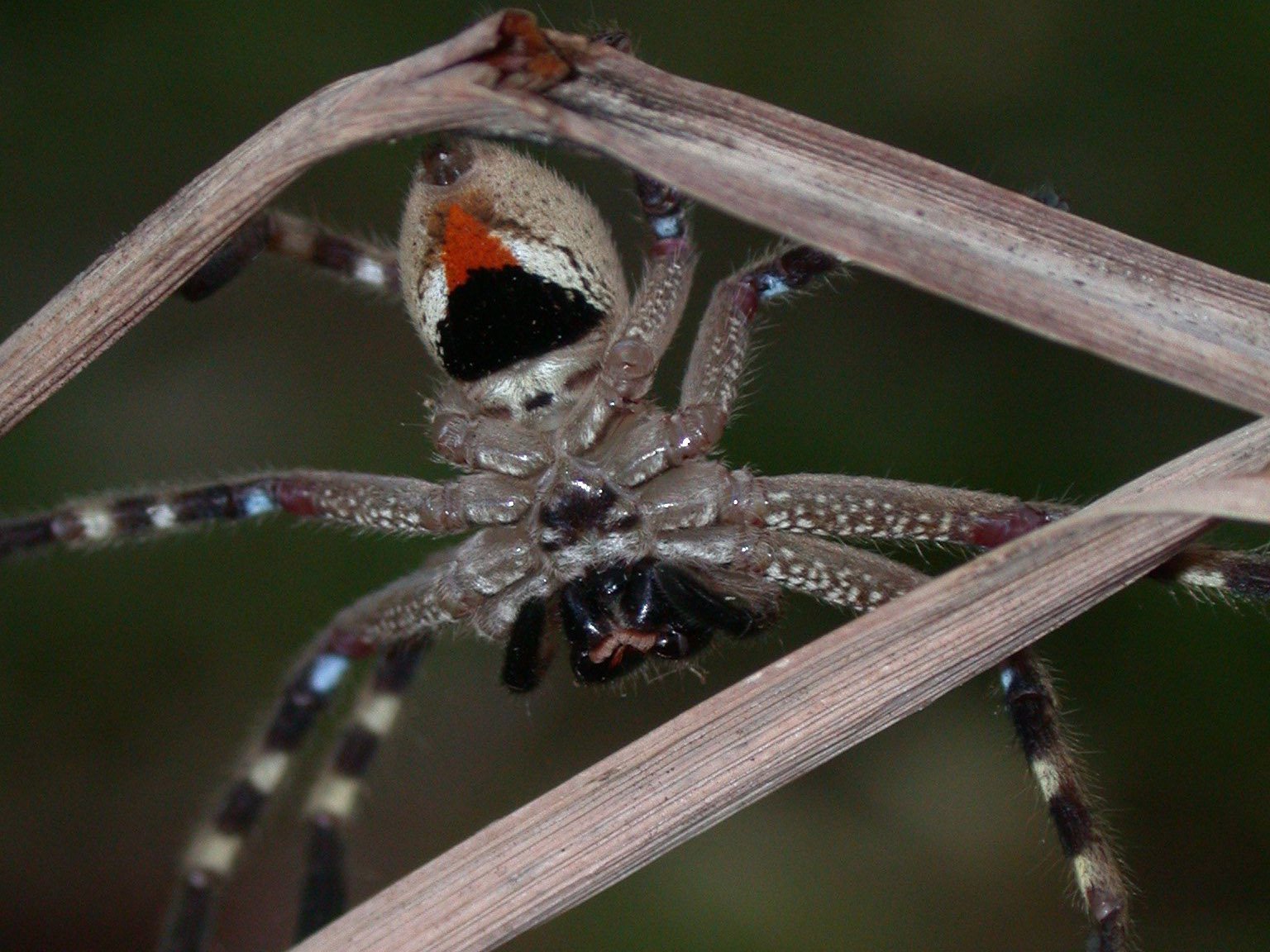Badge Huntsman Spiders
Shield Spiders
Introduction
The common name 'Badge Huntsman' comes from the distinctive, often brightly coloured badge or shield on the underside of the abdomen.
What do Badge Huntsman Spiders look like?
Identification
Badge Huntsman Spiders are large, long-legged spiders. They are usually fawn or grey on top, with distinctive colour combinations of black, white, orange or yellow under the abdomen (the 'badge') and colour bands on the underside of the front legs. Most huntsman spiders have flattened bodies adapted for living in narrow spaces under loose bark or rock crevices. This is aided by their legs which, instead of bending vertically in relation to the body, have the joints twisted so that they spread out forwards and laterally in crab-like fashion ('giant crab spiders' is another common name for the family). Badge Huntsman Spiders (Neosparassus) have less flattened bodies than most other huntsmans.
Some juvenile Neosparassus are bright green and in some undescribed species this colour persists as adults. Australian Badge Huntsman species were formerly included in the widespread genus Olios, but this genus is no longer thought to occur in Australia.

A female Badge Huntsman Spider, Neosparassus sp
Image: Heather McLennan© Australian Museum
Where do Badge Huntsman Spiders live?
Habitat
Badge Huntsman Spiders, like other huntsmans are found living under loose bark on trees, in crevices on rock walls and in logs, under rocks and slabs of bark on the ground, and on foliage. Some Badge Huntsman Spiders in woodlands are burrow builders, with and without trapdoors.
Huntsman spiders of many species sometimes enter houses. They are also notorious for entering cars, and being found hiding behind sun visors or running across the dashboard.
Distribution
Badge Huntsman Spiders in the genus Neosparassus are found all over Australia.
What do Badge Huntsman Spiders eat and how do they mate?
Feeding and diet
Food consists of insects and other invertebrates.
Breeding behaviours
Some species of Neosparassus build a silken retreat in foliage, often at ground level, by binding several leaves together with silk, while others construct shallow burrows or move into abandoned cicada burrows. The young of Neosparassus species are often green in colour changing to a brown colour after several moults.

CC BY-NC 4.0
Other behaviours
Whilst Neosparassus species are camouflaged on their dorsal surface, the bright colours of the underside are used as a threat display and spiders throw themselves onto their backs when directly threatened. Like all huntsman spiders, Neosparassus species have brushes of hairs on the legs and feet that enable them to climb on smooth surfaces.
Are Badge Huntsman Spiders dangerous?
Danger to humans
Badge Huntsmans have been known to bite and general symptoms include local severe pain and swelling, sweating, nausea and vomiting. A cold pack may relieve local pain. Seek medical attention if symptoms persist.

© Bruce Hulbert


